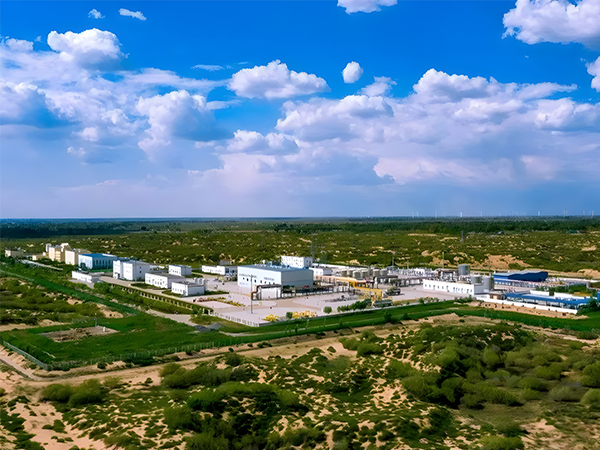Changqing Oilfield: Light up "Science and technology Tree" for winter supply "gas storage"

As of October 31, 1,750 Wells had been drilled and 997 Wells had been put into operation in the production capacity construction of the self-operating area of Changqing Gas field, with the gas contribution of new Wells reaching 1.15 billion cubic meters, and the quality and efficiency of gas field development had been improved, ensuring the long-term energy storage of natural gas supply for this winter and next spring.
In order to ensure sufficient supply of natural gas, Changqing Oilfield has always taken natural gas production as an important mission, given full play to its resources and technical advantages, highlighted key projects such as "ballast stone" in old gas fields, SEC storage and production balance, and enhanced oil recovery, accelerated the evaluation of tight gas new areas and the pilot test of coal and rock gas, and continuously consolidated the stable production resource base of 50 billion cubic meters in Changqing Gas area. The rapid development of gas fields is driven by technological innovation.
More than 85% of the natural gas in Ordos Basin belongs to tight gas, how to fight an efficient exploration offensive war? Changqing Oilfield takes technological innovation as the power source, timely adjusts exploration ideas, deeply promotes a new round of prospecting breakthrough strategic actions, continuously deepens exploration in the "four new" fields, and speeds up the iteration and upgrading of key technologies. The two major geological theories of karst paleo-geomorphic accumulation and tight sandstone gas accumulation have been innovated, and the exploration field has realized a major transformation from the periphery of the basin to the central part, from single layer to multi-layer system, and from outside to inside the source. The rapid growth of natural gas reserves has been continuously promoted, and 14 gas fields have been discovered, with an average annual increase of proven natural gas reserves exceeding 200 billion cubic meters for 17 consecutive years. In recent years, Changqing Oilfield has innovated 30 tight gas development main technologies in 6 categories, such as three-dimensional seismic, optimal and rapid drilling of horizontal Wells, and volume fracturing, and built the largest tight gas production base in China, creating an innovative highland for unconventional gas development.
With the continuous development, Changqing oilfield exploration "to the source, to the depth, to the edge" shift, how to achieve economic and effective development? In unconventional new areas and Qingyang and Qingshimao gas fields, Changqing Oilfield continues to make efforts to strengthen scientific and technological research and fine management in accordance with the four levels of "controlling resources, evaluating enrichment, scale testing, and accelerating production", and light up the "science and technology tree" to speed up and increase efficiency.
At the same time, with resources as the core, Changqing Oilfield has implemented the project of increasing storage and production in the new area, integrated the application of special logging, seismic, three-dimensional geological modeling and other technical means, constantly optimized the geological model, and carried out research on the distribution of favorable sand bodies and the law of high yield and enrichment. The innovation has formed the three-way reservoir control theory of "sedimentary control + physical property control + fault adjustment" in Qingshimao gas field and the new understanding of "paleotopographic facies control and facies zone control of reservoir control" in Qingyang gas field. In addition, the integrated management of exploration, evaluation and development will be effectively implemented, well location deployment will be optimized, production capacity construction in test mining areas will be accelerated, and technology research in pilot test areas will be accelerated. It is expected that by the end of this year, the daily gas output of Qingyang Gas field and Qingshimao gas field will reach 1.7 million and 900,000 cubic meters, respectively, and the supply base will be more adequate in winter.


